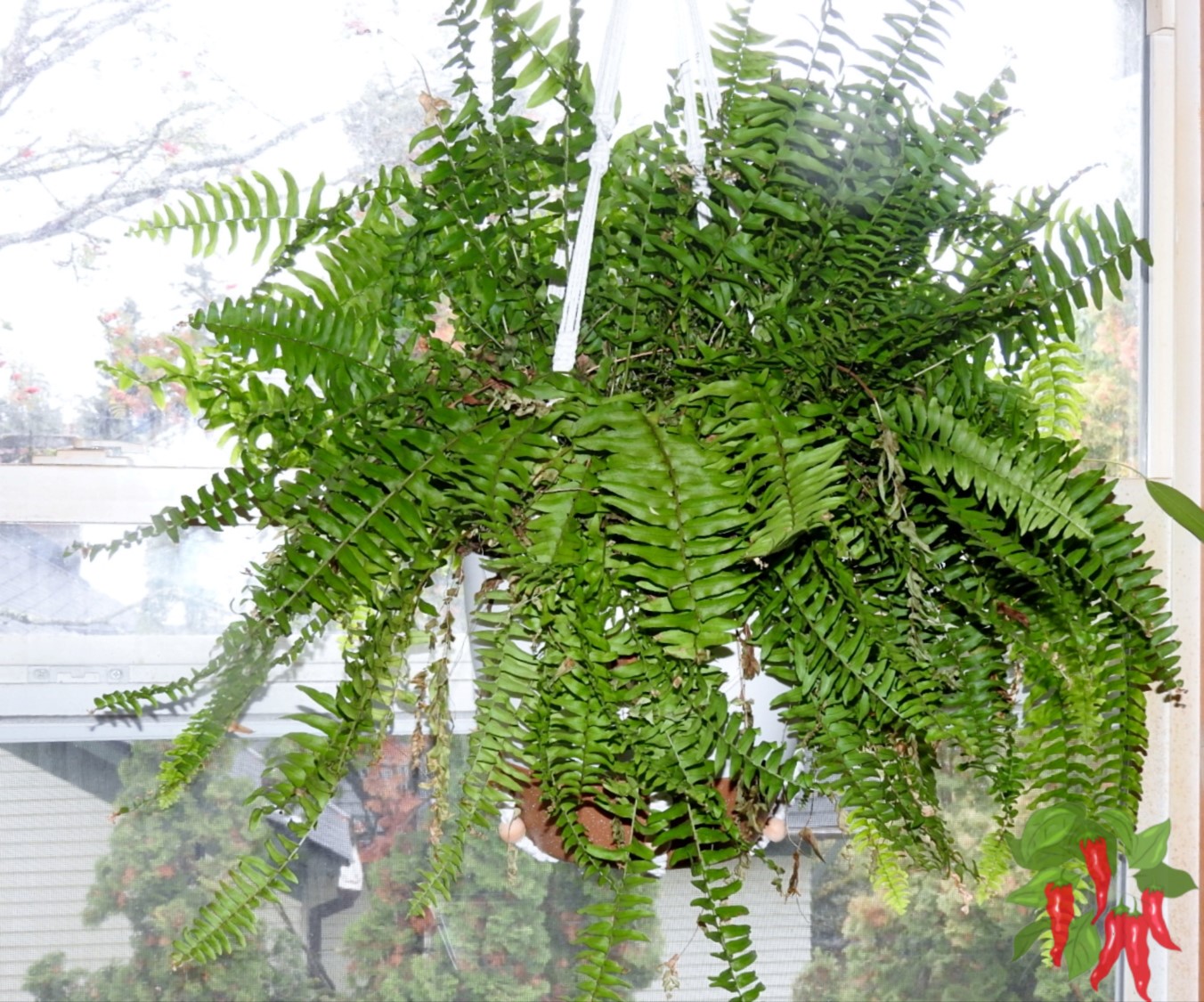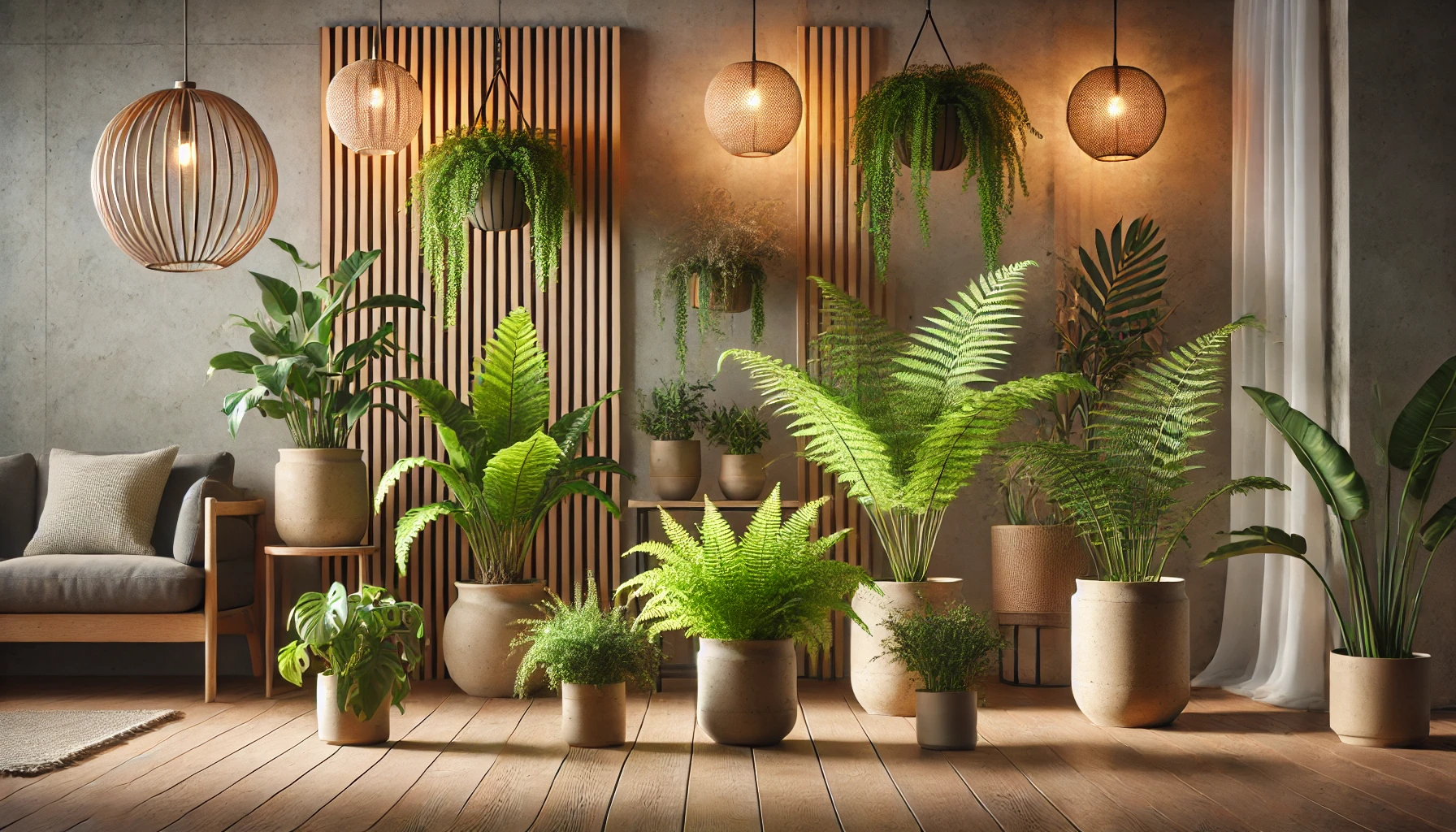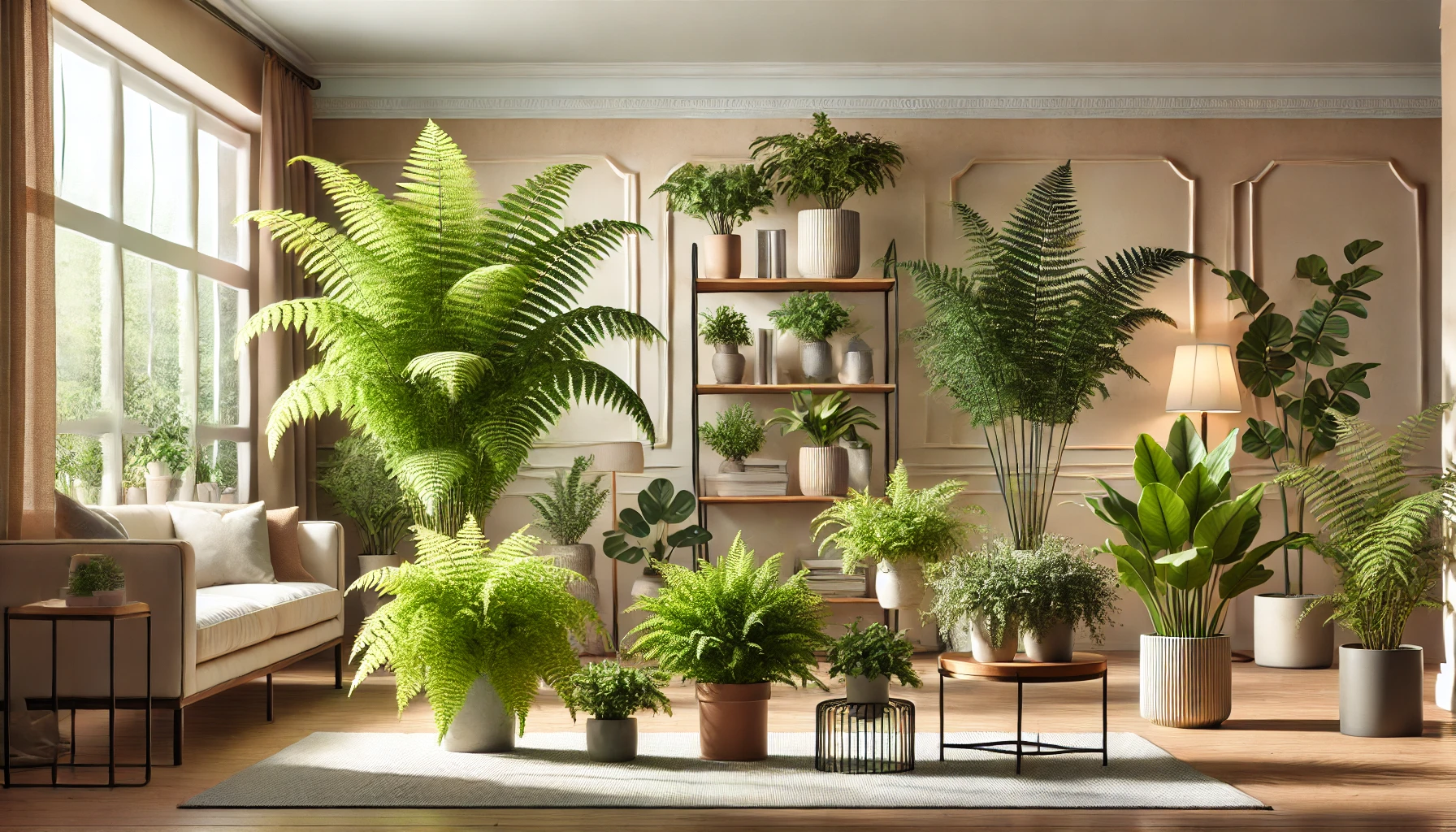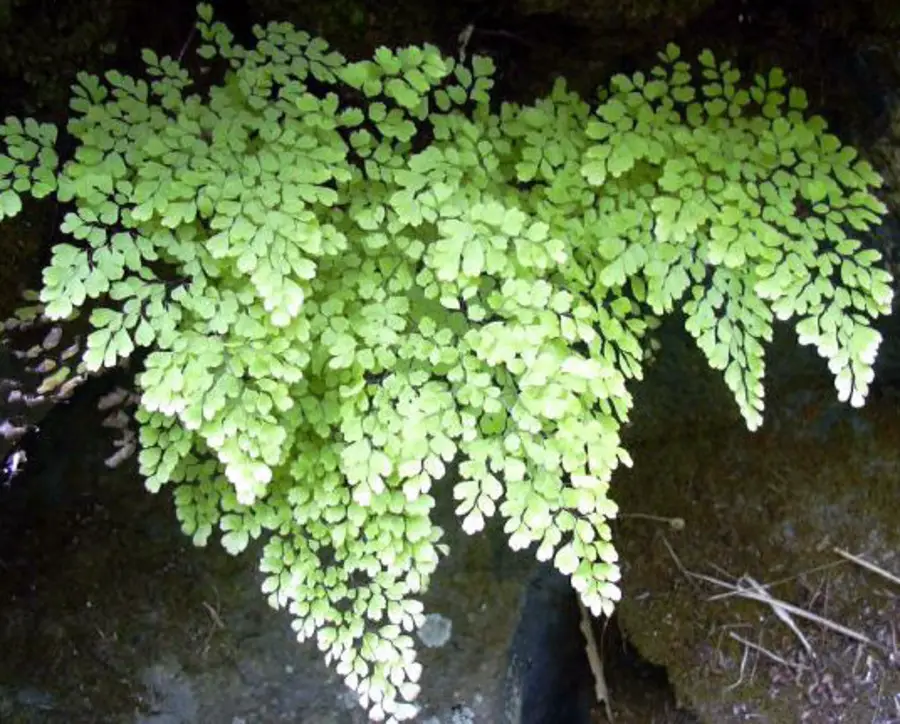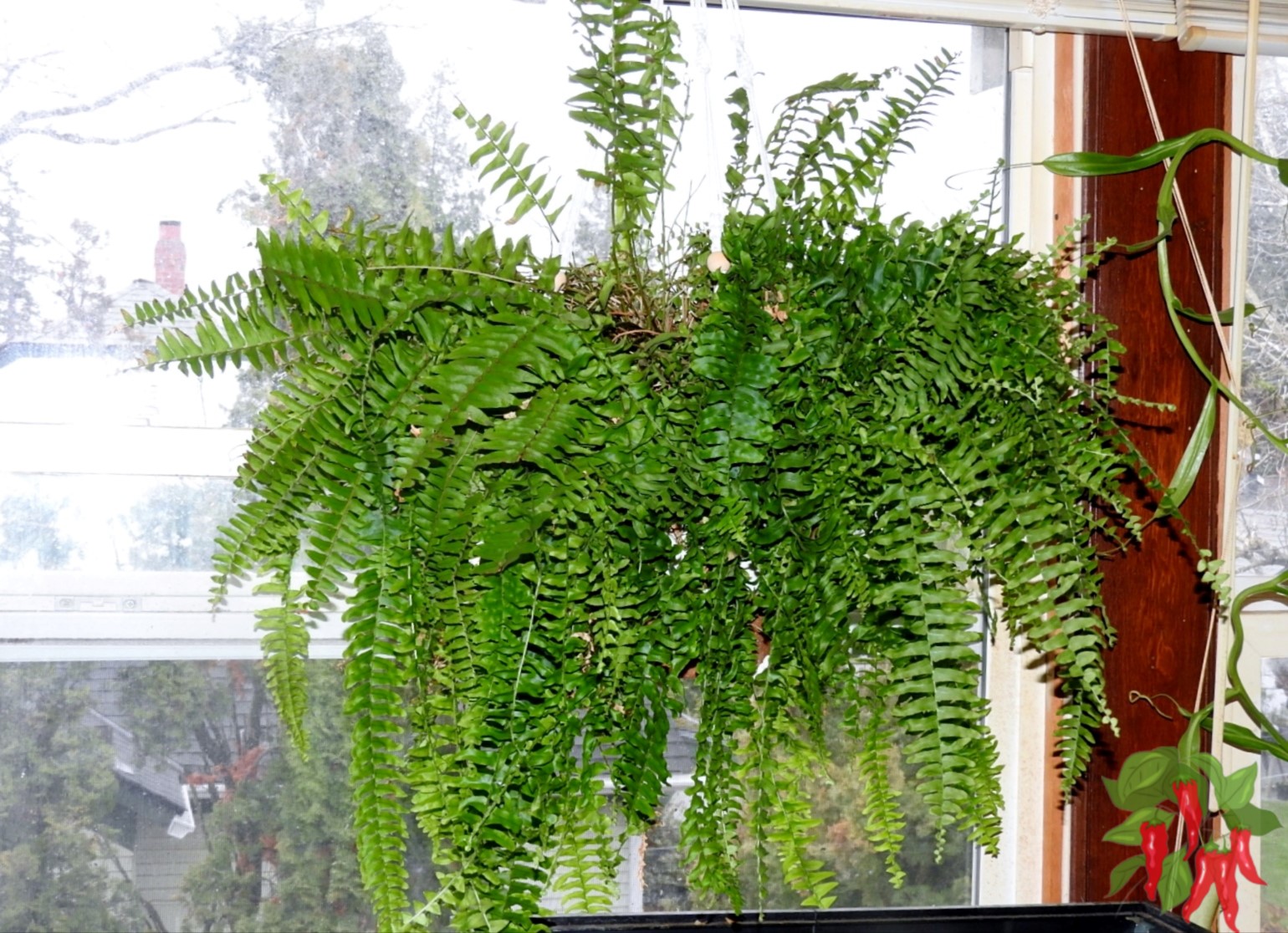This post contains affiliate links. If you buy something from one of our links we may earn a commission. Thanks
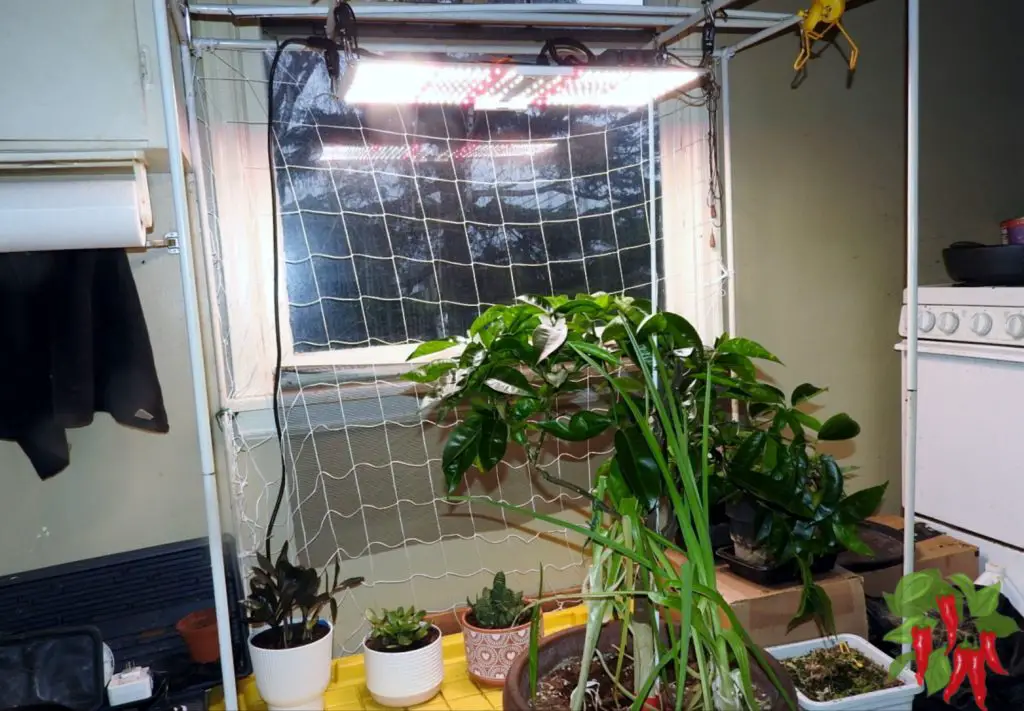
Discover the essential Light Requirements for Indoor Succulents in this easy-to-follow guide. Learn how to help your succulents thrive with proper lighting techniques.
Lighting Indoor Succulents Key Takeaways
- Lighting indoor succulents generally requires 4-6 hours of bright, indirect sunlight daily.
- Most succulents thrive in south or west-facing windows.
- Provide artificial grow lights if natural light is insufficient.
- Monitor leaf color and growth patterns to ensure proper light levels.
Light Requirements for Indoor Succulents
Understanding the light requirements for indoor succulents can make the difference between thriving plants and struggling ones.
Whether you’re dealing with dim corners or intense afternoon sun, understanding how to provide the right amount of light will transform your indoor succulent garden.
Let’s explore how to give your succulents the perfect lighting conditions they need to flourish.
The Popularity of Succulents as Indoor Plants
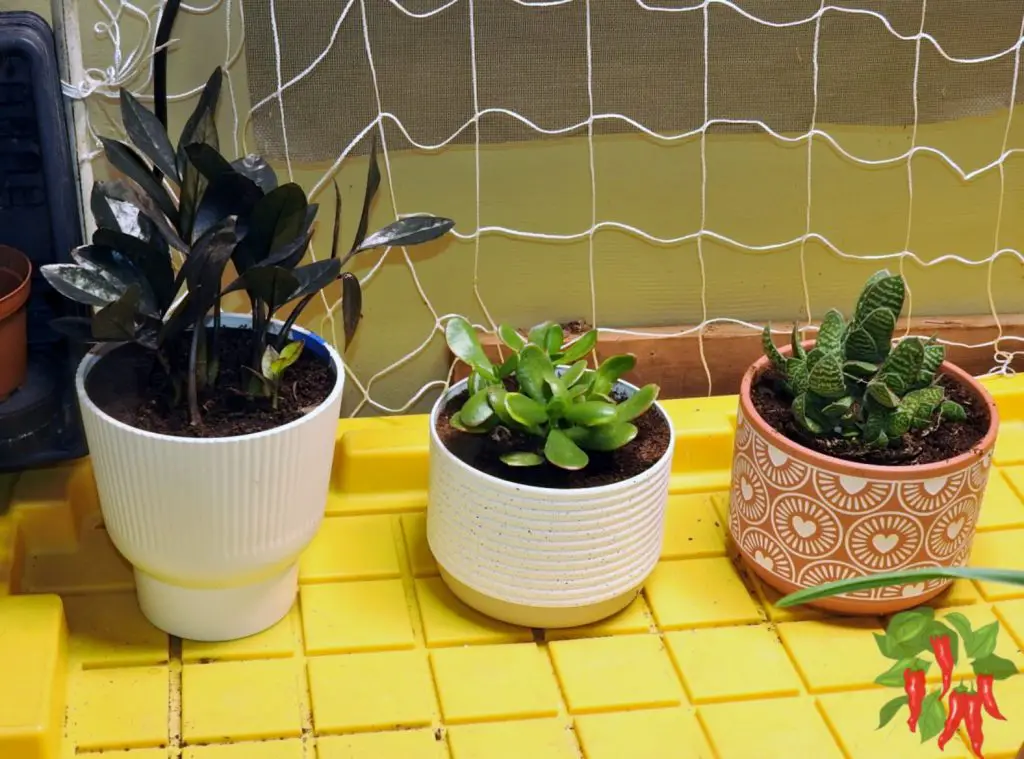
Succulents have become the go-to choice for indoor spaces, from offices to apartments, thanks to their striking shapes and low-maintenance nature.
These versatile plants have captured attention worldwide for their ability to add a touch of natural beauty to any indoor setting, while their compact size and varied forms make them perfect for windowsills, desks, and shelves.
Importance of Proper Lighting for Succulent Health and Growth
Think of light as food for your succulents – they need just the right amount to stay healthy and happy!
While these tough little plants can handle some tough conditions, giving them proper lighting makes all the difference in how they look and grow.
When succulents get the light they love, they’ll reward you with vibrant colors, compact growth, and that gorgeous shape you fell in love with at the garden center.
Without enough light, they’ll start stretching out and losing their charm – kind of like a houseplant doing yoga to reach the sun!
Lighting Indoor Plants Reference Guide
| Light Level | PPF (umol m⁻²s⁻¹) | Foot-Candles | Watts | Description |
|---|---|---|---|---|
| Low Light | 50-150 | 50-250 | 10-15 | Suitable for north-facing windows or darker corners. These plants require little to no direct light and thrive as “understory plants” in their natural habitats, growing beneath larger plants. |
| Medium Light | 150-250 | 250-1,000 | 15-20 | Ideal for east-facing windows or areas near west-facing windows, but away from direct light. |
| High Light | 250-450 | >1,000 | >20 | Best for brightly lit areas like south- or southwest-facing windows. These plants need abundant direct or strong indirect light. |
1. Understanding Succulent Light Needs
Let’s break down how these amazing plants use light to grow! Just like us needing the right amount of food and rest, succulents have their own special way of turning light into energy.
Photosynthesis in Succulents
Your succulents are clever little light-eaters! They’ve developed a unique way of using sunlight that’s different from other houseplants.
Imagine them as night owls who prep their meals while you sleep – they collect carbon dioxide at night and then use sunlight during the day to turn it into plant food.
This special process (called CAM photosynthesis) helps them save water while making the most of their light exposure.
• They use CAM photosynthesis to collect CO2 at night
• Their water-saving process allows efficient energy production
• Light energy converts stored CO2 into plant sugars during day
• Consistent light exposure ensures optimal energy production
Differences Between Natural and Artificial Light Sources
When it comes to lighting your succulents, both natural and artificial sources can work well. Understanding the differences helps you create the perfect lighting setup for your space.
• Natural sunlight delivers a complete light spectrum
• Morning sun provides gentle but effective exposure
• South-facing windows offer consistent natural light
• LED grow lights work well as supplements
• Artificial lighting needs longer exposure times
Common Misconceptions About Succulent Lighting
Many myths circulate about succulent lighting needs. Let’s clear up these misunderstandings to help your plants thrive.
• Not all varieties need constant intense sun
• Light needs vary by species and natural habitat
• Sudden intense light can cause leaf burn
• Low light tolerance doesn’t mean dark corners work
• Seasonal changes affect light requirements
2. Assessing Your Indoor Environment
Understanding your home’s lighting is kind of like being a detective – you need to spot the clues that lead to the perfect spots for your succulents!
Take a walk through your home at different times and notice how the light changes.
That bright corner in the morning might be totally different by afternoon.
Evaluating Natural Light Availability in Your Home
Think of your home as having different “light zones” – some spots are like a sunny beach, while others are more like a shady forest.
Getting to know these zones is super helpful for matching the right plant to the right place.
Quick Light Level Test
The best part? You can use a simple trick – just hold your hand about 12 inches above the spot where you want to put your plant.
- If you see a sharp, dark shadow, you’ve got bright light.
- A fuzzy, faint shadow means medium light.
- Barely any shadow at all? That’s low light territory.
The secret is checking these spots throughout the day – morning, noon, and afternoon.
It’s like creating a light map of your home, and your succulents will thank you for taking the time to find their perfect sunny (or not-so-sunny) spot!
• Use the hand shadow test – sharp shadows mean bright light, fuzzy edges indicate medium light
• Track sun patterns throughout different times of day
• Note seasonal changes in light intensity and duration
• Consider obstacles like trees or buildings that affect light
3. Optimal Window Orientations for Succulent Plants
Different window orientations provide varying light intensities. Understanding these differences helps match your succulents to ideal locations.
• South-facing windows provide brightest light (PPF: 250-450 umol m-2s-1, 1,000+ foot-candles, 20+ watts)
• East windows offer gentle morning sun (PPF: 150-250 umol m-2s-1, 250-1,000 foot-candles, 15-20 watts)
• West windows provide afternoon intensity (PPF: 150-250 umol m-2s-1, 250-1,000 foot-candles, 15-20 watts)
• North windows offer lowest light levels (PPF: 50-150 umol m-2s-1, 50-250 foot-candles, 10-15 watts)
Measuring Light Levels
Measuring PPF (Photosynthetic Photon Flux) and foot-candles helps you understand exactly how much light your succulents are getting. Here’s how to do it:
PPF Measurement
• Use a PAR meter to measure light hitting your plants
• Shows light useful for photosynthesis (400-700nm range)
• Higher numbers mean more intense light
• Measures in micromoles per square meter per second (μmol/m²/s)
• Professional tool used in greenhouses and indoor gardens
Foot-candle Measurement
• Use a light meter or smartphone light meter app
• Measures visible light intensity
• More common for home growers
• Easy to understand scale: bright sun = 10,000+ fc
• Good for comparing different spots in your home
Quick Hand Test Method
• Hold your hand 12 inches above surface
• Sharp shadow = high light (1,000+ fc)
• Soft shadow = medium light (250-1,000 fc)
• Faint/no shadow = low light (50-250 fc)
• No special equipment needed
Recognizing Signs of Insufficient or Excessive Light Exposure
Your succulents will tell you if they’re getting too much or too little light through various physical changes.
• Stretching or leaning indicates insufficient light
• Pale or bleached leaves suggest too much direct sun
• Compact growth patterns show proper light levels
• Color changes can indicate light stress or satisfaction
• New growth direction points to light adjustment needs
4. Choosing the Right Artificial Lighting
Let’s face it – not everyone has perfect natural light in their home. Don’t worry though! Artificial lighting can be your secret weapon for growing gorgeous succulents, even in darker spaces.
Here’s everything you need to know about picking the right lights for your succulent family.
Overview of Grow Light Types
Think of grow lights as your succulents’ personal sunshine machines! Each type has its own personality and perks.
• LED lights are like the smart choice – they’re energy-efficient and don’t get too hot around your plants
• Fluorescent lights are the budget-friendly option that still gets the job done nicely
• Skip the incandescent bulbs – they’re like that old car that uses too much gas and doesn’t get you far
Full Spectrum LED Lights
• Full-spectrum LED grow lights give you the most bang for your buck in the long run
I am using a Spider Farmer SF2000 in my succulent garden. I’ve had it for a couple of years.
Very happy with it. It’s well made and trouble free. It is a full spectrum Led and its affordable. I can easily cover a 2×4 area with it when raised up.

Spider Farmer SF2000, Samsung LM301H EVO Led Grow Light, Full Spectrum Plant Grow Light, 200W Dimmable & High Efficiency & Deeper Penetration Lamps for Seed Starting Vegetables Bloom in 2×4 Grow Tent
Selecting Appropriate Light Spectrums
Your succulents are picky about their “light diet” – they need the right mix of light colors to thrive.
• Blue light helps with leaf growth and keeping plants compact
• Red light encourages flowering and strong stem development
• Full-spectrum lights mimic natural sunlight most closely
• Look for lights specifically marketed for succulents or cacti
• White LED lights can work well for general growing needs
Determining the Ideal Distance and Duration
Getting the right setup is like finding that perfect spot at the beach – not too close to get burned, but close enough to soak up the rays!
• Start LED lights about 24 inches from your plants and adjust them based on their response. It really can vary depending on their wattage.
• Provide 12-14 hours of artificial light daily
• Watch for signs of burning (brown spots) or stretching (too far away)
• Use a timer to maintain consistent lighting schedules
• Gradually increase light exposure to prevent shock
5. Seasonal Adjustments and Light Cycles
Just like we adjust our routines with the changing seasons, your succulents need different light care throughout the year.
Understanding these seasonal shifts helps you keep your plants happy no matter what the weather’s doing outside.
Adapting Lighting Strategies During Different Seasons
Your succulents need different care as the seasons change, just like you might need a light jacket in fall or sunscreen in summer.
• Increase artificial light during shorter winter days
• Move plants closer to windows during cloudy winter months
• Protect from the intense summer sun with sheer curtains
• Adjust watering with seasonal light changes
• Watch for signs that your plants need light adjustments
Understanding Succulents’ Photoperiodism and Growth Impact
Your succulents are basically tiny light-tracking machines! They use day length to know when to grow, rest, or flower.
• Most succulents actively grow in spring and summer
• Shorter winter days trigger dormancy in many species
• Some varieties need specific day lengths to bloom
• Growth slows naturally during the winter months
• Color changes often signal seasonal adaptations
Implementing Light Schedules to Mimic Natural Conditions
Help your succulents feel at home by creating lighting that matches their natural habitat rhythms.
• Set timers to match local sunrise and sunset times
• Gradually adjust light duration with seasons
• Provide rest periods with reduced light
• Consider your succulent’s native habitat
• Create transitions between light and dark periods
6. Advanced Techniques for Optimal Growth
Want to take your succulent care to the next level? These pro tips will help you create the perfect lighting setup that makes your succulents thrive. Think of it as creating a custom lighting studio for your green friends!
Utilizing Reflective Surfaces to Maximize Light Distribution
Just like photographers use reflectors for perfect lighting, you can bounce light to your succulents’ advantage.
• Place mirrors or white surfaces nearby to reflect light
• Try aluminum foil wrapped cardboard for budget-friendly reflectors
• Use light-colored pots to bounce light back to leaves
• Position plants to catch reflected light from light walls
• Create mini light stations with reflective materials like mylar
Rotating Plants to Ensure Even Light Exposure
Keep your succulents looking their best by giving them a regular spin – think of it as their weekly workout routine!
• Turn pots a quarter turn weekly for balanced growth
• Watch for leaning as a sign it’s time to rotate
• Create a simple rotation schedule to stay consistent
• Check all sides for even color development
• Adjust rotation frequency based on growth patterns
Combining Natural and Artificial Light Sources Effectively
Mix and match lighting sources like a pro to create the perfect environment for your plants.
• Use grow lights to supplement weak natural light
• Position artificial lights to fill shadow areas
• Create light layers using different heights and angles
• Adjust artificial light timing to extend daylight hours
• Monitor plant response to your combined lighting setup
7. Common Lighting Challenges and Solutions
Even experienced growers run into lighting issues with their succulents. Let’s tackle the most common problems you might face and learn how to fix them before they become serious issues.
Addressing Etiolation and Leggy Growth
When succulents don’t get enough light, they stretch out looking for more – kind of like reaching for a snack that’s just out of reach!
• Move stretched plants gradually to brighter spots
• Trim leggy growth to encourage compact new growth
• Add supplemental lighting if natural light is insufficient
• Watch for early signs like spacing between leaves
• Consider propagating stretched plants for a fresh start
Preventing and Treating Sunburn in Succulents
Just like us, succulents can get too much of a good thing when it comes to sun exposure.
• Introduce plants to bright light gradually over weeks
• Use sheer curtains to filter intense afternoon sun
• Watch for reddish or brown patches on leaves
• Move burned plants to slightly shadier spots
• Allow burned leaves to heal naturally while protecting new growth
Troubleshooting Light Intensity and Duration Issues
Fixing lighting problems is like solving a puzzle – you need to look for the right clues.
• Check for color changes that signal light stress
• Measure light levels at different times of day
• Adjust light duration before changing intensity
• Document changes in growth patterns
• Test different locations to find the sweet spot
8. Lighting Strategies for Specific Succulent Varieties
Not all succulents need the same light setup – each variety has its own preferences and personality. Let’s explore how to give different types exactly what they need to show off their best features.
Tailoring Light Requirements for Low-Light Tolerant Species
Some succulents are natural shade lovers, making them perfect for less sunny spots in your home.
• Snake plants thrive in low to medium light conditions
• ZZ plants adapt well to lower light environments
• Haworthias prefer bright indirect light over direct sun
• Christmas cacti do best in filtered morning light
• Consider light patterns in their natural habitats
Special Considerations for Variegated and Colorful Succulents
These showstoppers need special attention to maintain their stunning colors and patterns.
• Variegated plants need more light than solid green varieties
• Morning sun helps enhance vibrant colors
• Too little light can cause loss of variegation
• Protect from harsh afternoon sun to prevent bleaching
• Monitor color changes as indicators of light needs
Some common variegated and colorful succulents that you might find appealing:
Echeveria ‘Perle von Nurnberg’: Features beautiful pinkish-purple leaves.
Kalanchoe ‘Pink Butterflies’: Has pink plantlets along the edges of its leaves.
Sedum ‘Variegatum’: Displays green leaves with creamy white edges.
Haworthia ‘Zebra Plant’: Recognized by its white, horizontal stripes on dark green leaves.
Crassula ovata ‘Variegata’: Also known as the variegated jade plant, with green leaves and white or yellow stripes.
Echeveria ‘Lola’: Known for its pastel-colored rosettes.
Graptopetalum paraguayense ‘Ghost Plant’: Has pale blue-gray leaves that can turn pinkish in bright light.
Agave ‘Cream Spike’: Features green leaves with creamy white margins.
Aeonium ‘Sunburst’: Displays green leaves with yellow variegation and pink edges.
These succulents are not only visually stunning but also relatively easy to care for, making them perfect for both novice and experienced gardeners.
Lighting Needs for Flowering Succulents
Want your succulents to bloom? Getting the light right is key to encouraging those beautiful flowers.
• Most flowering succulents need more intense light
• Provide seasonal light changes to trigger blooming
• Watch day length carefully during the flowering season
• Use grow lights to extend daylight in winter
• Create rest periods to match natural cycles
9. Integrating Aesthetics with Functionality
Creating an attractive display while keeping your succulents healthy doesn’t have to be complicated. Let’s explore ways to blend beautiful design with proper plant care so you can enjoy the best of both worlds.
Designing Indoor Spaces for Plant Health and Home Decor
Your home can be both stylish and succulent-friendly with some smart planning.
• Arrange plants in groups at different heights for visual interest
• Use decorative stands to maximize window light exposure
• Create plant shelving that follows natural light patterns
• Mix succulent sizes and shapes for dynamic displays
• Choose containers that complement your décor style
Creative Lighting Setups That Enhance Plant Display
Good lighting can make your succulent collection look like a professional display.
• Install under-cabinet grow lights for subtle illumination
• Use attractive LED light stands as design elements
• Position decorative mirrors to amplify natural light
• Add spotlights to highlight special specimens
• Create layered lighting using different light sources
Incorporating Succulents into Various Room Environments
Every room has the potential for succulent displays with the right setup.
• Brighten bathrooms with humidity-tolerant varieties
• Create office desk gardens with compact specimens
• Design kitchen windowsill arrangements
• Build bedroom displays with gentle grow lights
• Set up living room focal points near bright windows
FAQ: Common Questions About Succulent Lighting
Understanding succulent lighting can bring up many questions. Here are answers to the most common concerns about keeping your indoor succulents happy and well-lit.
Q: How do I know if my succulent is getting enough light?
A: Healthy succulents maintain compact growth and vibrant colors. If your plant starts stretching or losing color, it needs more light.
Q: Can succulents survive without direct sunlight?
A: Yes, many species can thrive in bright indirect light. However, most need at least 4-6 hours of bright light daily for optimal growth.
Q: What’s the best window direction for succulents?
A: South-facing windows typically provide ideal light. East and west windows work well for many species, while north windows suit low-light varieties.
Q: How long should grow lights stay on?
A: Aim for 12-14 hours daily, mimicking natural daylight patterns. Use a timer for consistency.
Q: Can succulents get too much light?
A: Yes. Signs include bleached or burned leaves. Most succulents need protection from intense afternoon sun.
Q: Should I rotate my succulents?
A: Yes, rotate pots weekly to ensure even growth and prevent leaning toward light sources.
Q: How can I tell if my succulent needs more light in winter?
A: Watch for signs like stretched growth, fading colors, or leaves pointing toward light sources.
Conclusion
Successfully growing succulents indoors is all about understanding and managing their light needs. With the right knowledge and a bit of practice, you can create the perfect environment for these resilient plants to thrive.
Recap of Key Points
• Light intensity varies based on window orientation and season
• Monitor plant responses for signs of light stress or satisfaction
• Artificial lighting can effectively supplement natural light
• Different succulent varieties have unique light requirements
• Proper lighting ensures healthy growth and vibrant colors
Experiment and Observe
• Try different light exposures and watch your plants respond
• Document changes in growth patterns and coloration
• Adjust care based on seasonal changes
• Test various lighting combinations
• Learn from both successes and challenges
Tips for Success and Next Steps
• Regularly check plant health indicators
• Make gradual lighting adjustments
• Consider your local climate patterns
• Start with hardy varieties while learning
• Keep notes on what works best
Key Takeaways
• Most succulents need 4-6 hours of bright light daily
• Use the hand shadow test to gauge light intensity
• Rotate plants regularly for even growth
• Combine natural and artificial light as needed
• Match light conditions to each species’ needs
🌵 Indoor Succulent Guides
Discover how to grow, care for, and enjoy stunning indoor succulents! These guides cover everything from light needs to individual plant care.
- 🌱 Indoor Succulent Plant Care (Pillar Guide)
- 💡 Light Requirements for Indoor Succulents
- 🌙 Best Indoor Succulents for Low Light
- 🌵 Succulents and Cacti for Indoors
- 🌿 How to Grow Jade Plants
- 🪴 How to Grow Gasteria
- 🔥 Crassula Capitella ‘Campfire’ Plant
- 🌸 Sedum Burrito Care
- ✨ 17 Benefits of Growing Succulents Indoors
- 🍃 Crassula Capitella Varieties
- 🌼 Kalanchoe Care Indoors
- 🌴 Caring for Ponytail Palm
- 💎 String of Pearls Care
- See all articles in our Indoor Succulents category
Related Content
Visit my Amazon Influencer Page for videos and gardening products Grow Your Own Garden

